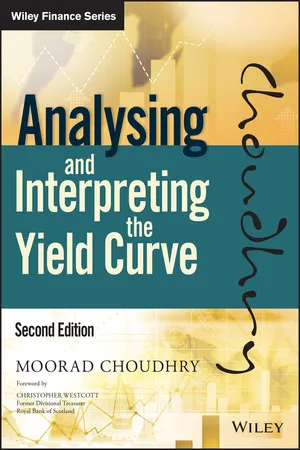
- English
- ePUB (mobile friendly)
- Available on iOS & Android
Analysing and Interpreting the Yield Curve
About This Book
Understand and interpret the global debt capital markets
Now in a completely updated and expanded edition, this is a technical guide to the yield curve, a key indicator of the global capital markets and the understanding and accurate prediction of which is critical to all market participants. Being able to accurately and timely predict the shape and direction of the curve permits practitioners to consistently outperform the market.
Analysing and Interpreting the Yield Curve, 2 nd Edition describes what the yield curve is, explains what it tells participants, outlines the significance of certain shapes that the curve assumes and, most importantly, demonstrates what factors drive it and how it is modelled and used.
- Covers the FTP curve, the multi-currency curve, CSA, OIS-Libor and 3-curve models
- Gets you up to speed on the secured curve
- Describes application of theoretical versus market curve relative value trading
- Explains the concept of the risk-free rate
- Accessible demonstration of curve interpolation best-practice using cubic spline, Nelson-Siegel and Svensson 94 models
This advanced text is essential reading for traders, asset managers, bankers and financial analysts, as well as graduate students in banking and finance.
Frequently asked questions
PART I
Introduction to the Yield Curve
CHAPTER 1
The Yield Curve
Table of contents
- Cover
- Table of Contents
- Foreword
- Preface
- Preface to the First Edition
- Acknowledgments
- About the Author
- PART I: Introduction to the Yield Curve
- PART II: Yield Curve Modelling and Post‐2008 Yield Curve Analytics
- PART III: Fitting the Yield Curve
- PART IV: Yield Curves and Relative Value Trading
- APPENDIX: Bond Yield Measurement
- Index
- End User License Agreement